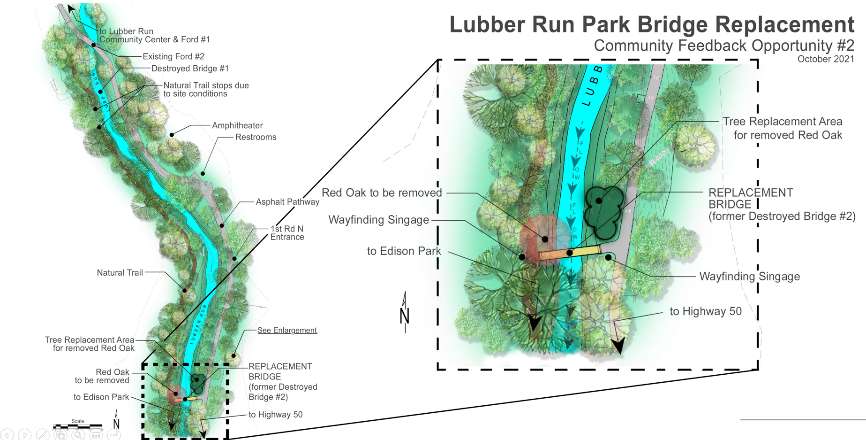Arlington County is working on a replacement for the two bridges over Lubber Run destroyed in severe flash flooding four years ago.
The Arlington County Board is set to discuss a $360,000 construction contract for a new pedestrian bridge at its meeting this weekend.
Flash flooding in 2019 washed away six pedestrian bridges in Arlington, including two in Lubber Run Park and four in Glencarlyn Park. The overall damage to county property was estimated at $6 million at the time.
On Saturday, the Board will consider approving the new bridge in Lubber Run, in place of the two that were destroyed. The contract — of about $329,000 with a $33,000 contingency — is expected to go to Fairfax-based Bright Masonry.
A lower bidder — by just over $30,000 — was “deemed nonresponsive” by county staff, according to a report to the Board.
The project’s goal is to “design one new bridge in the most suitable location for enhancing accessibility around the park,” the staff report said.
One of the bridges in Glencarlyn Park that was washed away was replaced in February of last year.
The proposed construction for Lubber Run involves building one new bridge in the southwest portion of the park to replace the previous two, as explained in the county’s project webpage.
“Through our community engagement and engineers’ analysis, we have found that this location will provide a significant, positive impact on park users and supports the community’s interest,” the webpage noted.
For parkgoers, the proposed bridge will provide access from Lubber Run to Edison Park, staff said. The bridge would also provide a connection between the southwest portion of the park and its east side.
Construction is estimated by staff to take around 12 months and seeks to minimize environmental harm.
“One tree, with exposed roots on the bank, will need to be removed. It already has a very low chance of survival due to its current condition,” the project webpage said. “We will plant healthy trees in the same general areas, which will better support our tree canopy in the long term.”






